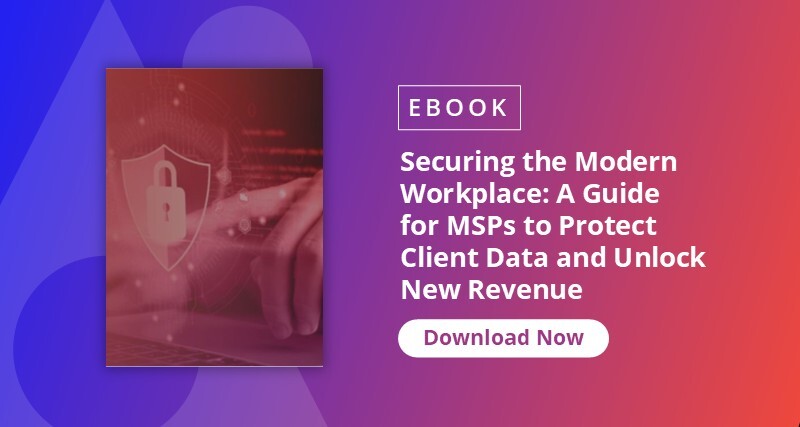Managed service providers (MSPs) today are navigating a complex landscape, facing increasing pressures from a growing customer base, expanding security threats, and heightened client expectations, all while working with existing resources.
Historically, MSPs concentrated on operational efficiency, handling tasks such as IT services, migrations, and customer support. However, 2025 marks a significant shift towards a “cybersecurity-first model,” where security capabilities – including backup, disaster recovery, phishing protection, threat detection, and data security – are no longer optional but expected.
Customers now anticipate proactive security, which involves securing identities, enforcing policies, and automating compliance across client environments before problems arise. This paradigm shift necessitates a move away from reactive break/fix approaches to a more strategic, proactive stance.
The Limitations of Reactive Security
Traditional security often involves reacting after an incident has occurred. This break/fix mentality and reliance on manual patching, updates, and audits leave significant windows of vulnerability and cannot keep pace with the scale and complexity of modern digital environments.
For example, while essential for disaster recovery, backup solutions alone do not prevent data exposure, control unauthorized access, ensure data governance, or protect against emerging AI-related risks.
Many MSPs juggle numerous security tools, leading to alert fatigue, inefficient workflows, and diminished effectiveness. Even native security controls offered by platform providers like Microsoft often lack centralized management across multiple tenants, provide limited visibility, and require substantial manual configuration. As an MSP business grows, these traditional methods become unsustainable, making consistent policy enforcement and granular access control difficult to achieve.

Embracing Proactive Data Security with DSPM
Data security posture management (DSPM) empowers MSPs to proactively detect security threats, enforce policies, and prevent data leaks before they even happen. This proactive approach allows MSPs to identify and address vulnerabilities such as:
- Over-shared sensitive data: Monitor and control external sharing, identify overprivileged accounts, and stop data leaks before they occur.
- Permission sprawl: Address issues like excessive guest user access to resources and permission sprawl across collaboration spaces by enforcing consistent permissions policies.
- Configuration drift: Implement baseline management to ensure consistent security across all customer tenants, automatically detecting and remediating configurations that drift from compliance benchmarks.
- Shadow IT: Provide visibility and governance to reduce shadow IT operations, preventing data exposure through unsanctioned channels.
By focusing on these areas, MSPs can enhance clients’ overall security posture, reduce risks, and improve compliance and governance, delivering significant value beyond just operational support.

DSPM and AI Readiness: Securing Innovation
The rapid adoption of cloud services, collaboration tools, and AI-powered technologies like Microsoft 365 Copilot has led to a significant increase in the volume and sensitivity of digital information. With 81% of organizations concerned about generative AI (GenAI) leading to sensitive data leaks, and Gartner predicting AI agents will exploit vulnerabilities 50% faster by 2027, securing client environments for AI adoption is crucial.
Data is now dispersed across various platforms, creating multiple pathways for exposure, including through AI systems accessing and processing sensitive data.
This is where a proactive DSPM posture becomes indispensable. By ensuring sensitive data is properly controlled and accessed only where appropriate, MSPs can help clients safely embrace innovation like AI without increasing their risk of breaches. DSPM assists with AI readiness through:
- Workspace optimization: Identifying and preparing collaboration spaces for safe AI integration, assessing which workspaces meet criteria for tools like Copilot, and implementing appropriate data boundaries.
- Information management: Controlling what information AI tools can access by managing search scope parameters across tenants, implementing exclusions for sensitive data, and configuring content boundaries.
- Adoption acceleration: Removing barriers to secure AI implementation, identifying workspaces eligible for AI features, and remediating security issues that could block AI adoption.
Scaling Security Services: Efficiency and Cost-Effectiveness
To “do more with less,” MSPs must adopt sustainable approaches that allow them to scale services without overstretching their teams. Juggling fragmented tools and manual processes is a major efficiency drain. Leveraging platforms that consolidate management, automate routine tasks, and enable proactive service delivery is key to working smarter and doing more with less.
Platforms with a unified approach, such as AvePoint Elements, streamline operations and help overcome scaling challenges. These benefits include:
- Optimized workflows: Managing users, devices, and security policies across multiple tenants from a single console, often referred to as a “single-pane-of-glass,” to reduce time spent learning different systems and accelerate common tasks.
- Automation: Managing identity and device lifecycle management, self-service provisioning with policy application, and consistent security enforcement – through automation – frees up staff for higher-margin work and reduces manual intervention.
- Cost optimization: Reducing Microsoft 365 management time by 85% or more. This efficiency allows MSPs to serve more customers with less overhead, increasing average revenue per user (ARPU) by up to 40% per added service.
- Build new MRR: Transform data security into predictable monthly recurring revenue by building out your security practice. Offer more comprehensive services to current and existing customers while limiting the amount of training required to bring new resources up to speed.
- Standardization: Create security baselines once and apply them across all customer tenants, ensuring consistent security and compliance settings at scale. Reusable communication templates for change management also save valuable time.
By implementing these strategies, MSPs can reduce manual effort, enable faster and more efficient client onboarding, and create “sticky,” high-value services that differentiate their offering and improve client retention.

Partnering for a Secure Future
A proactive approach to data protection is critical in the modern, AI-driven workplace. By focusing on DSPM, MSPs can offer reduced risk, enhanced compliance, AI confidence, and a controlled environment to their clients. Similarly, MSPs can bolster their own businesses through improved efficiency, scalability, and new revenue streams.
This enables MSPs to become trusted security service providers, positioning themselves as leaders in AI integration and data management.
Join our webinar to discover how to deliver smarter, scalable security services that protect your clients — and your bottom line.


